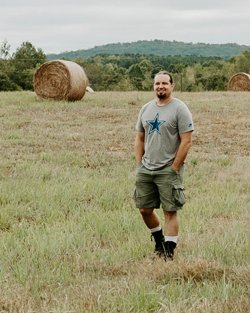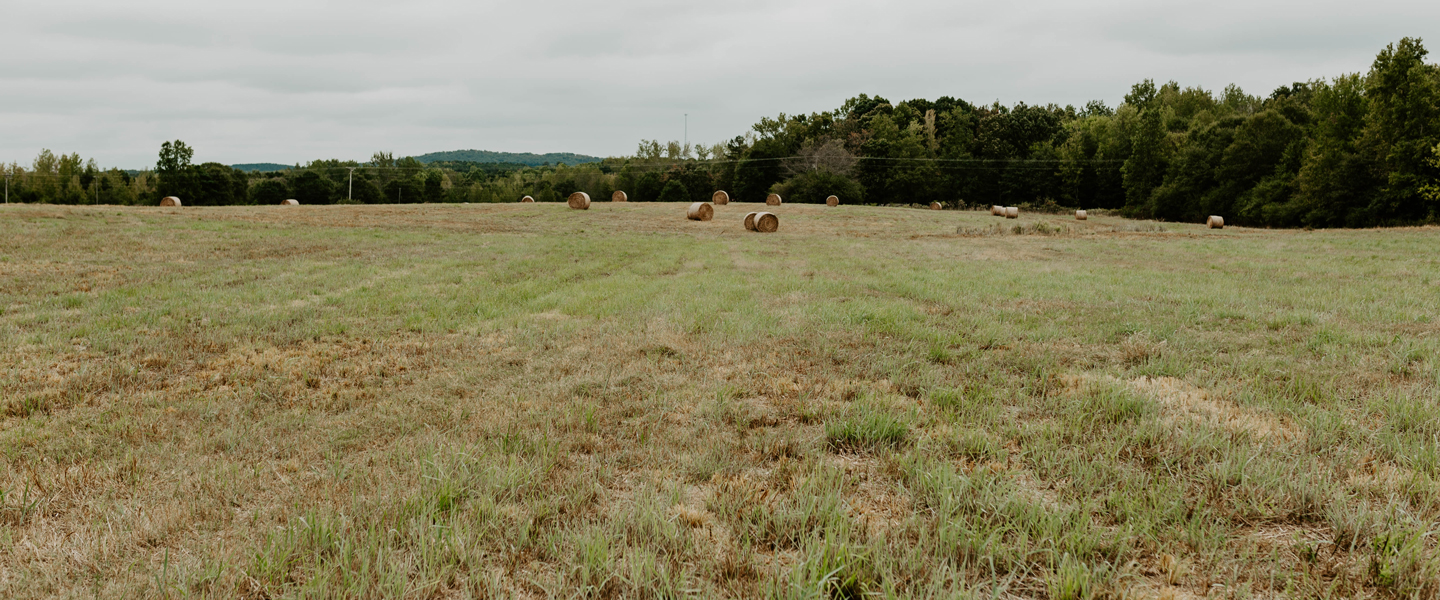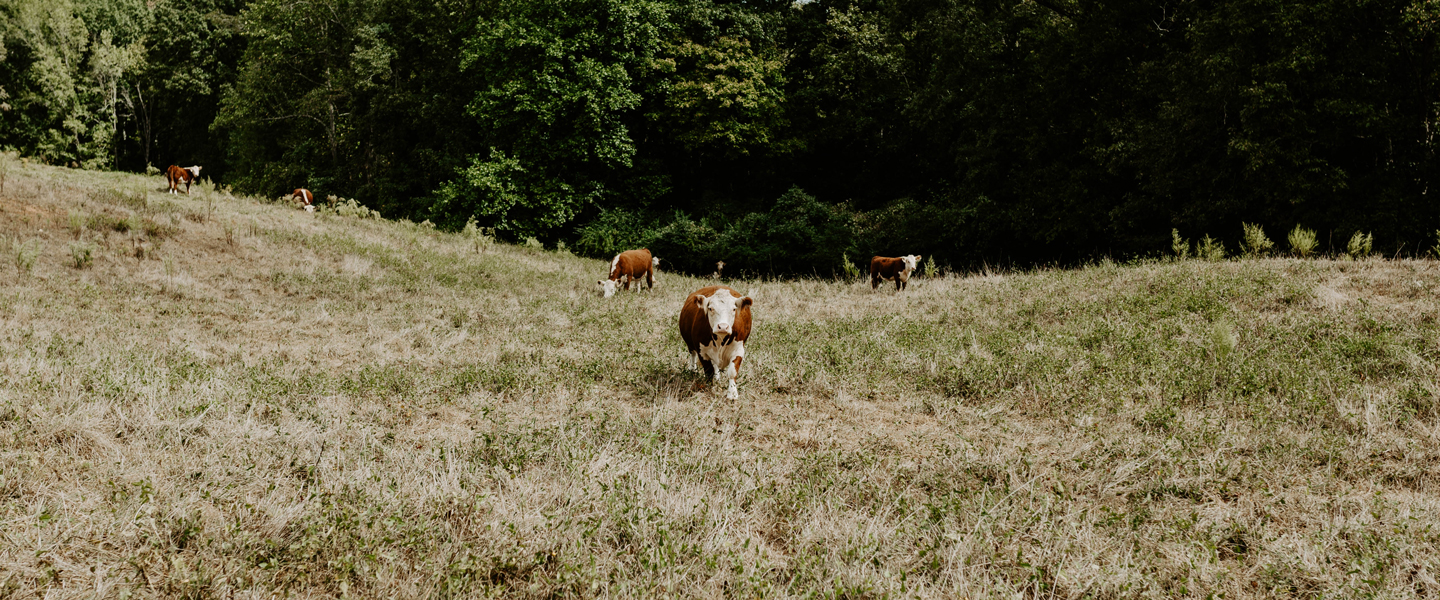Restoring native grasses on protected property
February 28th, 2022
By Lauren Muller
Grassland might be the hottest habitat restoration buzzword in the southeast, as landowners increasingly seek resources and advice on how to establish native grasses on their property. Some hope to attract birds, turkey, or other wildlife, while others simply appreciate the ethereal beauty of an autumn grassland when glimmering seed plumes dance in the slightest of breezes. Chad Culbertson is one such landowner, and he shares his innovative approach that combines income generation with native grass restoration on his protected property.
 How did you first get interested in native grasses?
How did you first get interested in native grasses?
In 2009, after we put the Warrior Mountain tract under easement, we had some local experts do an endangered species survey to see if we had anything that needed serious conservation efforts. So Russell Burns and Rick Huffman came down and surveyed the whole property and gave us a really good catalog of what they saw. During that time, I got used to identifying many native plants that I wasn’t familiar with before. I had already begun looking for a way to generate more revenue, and Rick mentioned producing native plant seed. He consulted with me on how to actually go about starting that work and how to make contacts with the people marketing and selling the seeds. One of the big things that Rick did was put me in touch with John Seymour of Roundstone Native Seed in Kentucky. We toured the entire operation and equipment set up. John was extremely gracious to host us and has been an incredible resource.
Describe your native grass growing operation.
Right now I have about 20 acres of Indian Grass, 20 acres of Purple Top, 10 acres of Black-eyed Susan, 14 acres of Little Bluestem and Broomsedge, and we are putting another 70 acres into a grass and pollinator mix through the Environmental Quality Incentives Program (EQIP) program. I send the bulk seed to Roundstone, who separates, cleans, and tests the seed, and has the marketing and distribution channels.
What are the economic opportunities for native grass seed producers?
At the time that I connected with Rick, I didn’t know much about the economic value of native plants and had no idea that the native seed market even existed. I began learning how big the footprint of native seed market actually was with projects like roadside restoration projects, food plot mixes, or beautification projects. Right now, certain specialty grasses that are harder to find or grow could be quite profitable. Getting the process to be effective and efficient can be difficult. The supply/demand cycle is also hard to predict, so prices can be up or down. If it's something you'd enjoy doing, and love the work itself, it could be a good option.

Aside from growing native grasses for seed production, what ecological benefits could a landowner expect if they began planting native grasses?
I can’t believe the volume of insects that I see now — everything from mantids to grasshoppers. I’ve observed lots of species that I had never seen before, and I’ve lived here my whole life. That has caused other species up the food chain do better as well. I wouldn’t say that there are noticeably more large species, like deer or turkey, but they seem to be healthier as a result. Fortunately, some of the native grasses are very easy to plant even if you have some weed pressure, as long as you aren’t trying to establish a monoculture seed production field. It's also just very pretty.
What are some lessons learned during your grass propagation journey?
Starting out, my ideas were bigger than my capacity when I began trying to produce native grass seed commercially. I should have started smaller to get familiar with the land, cultural practices, timing, and how much work it takes per acre. For example, spring and summer plantings did not work for me. I had to plant everything in the fall even though the seed was pre-stratified, or cold treated, in order to give it enough time to compete with the weeds. There are good selective herbicides for some of it, but most of the species are very sensitive to chemicals when they're young, so you have to be very careful during that first year.
That being said, you have to be much more thorough with the field preparation prior to planting than I was. I came in with the intention of having a very light hand and small footprint, and tried to minimize the amount of chemicals and equipment needed. But you really do have to be assertive prior to establishment. I was really surprised by the invasive weeds in the seed bank. There was so much pigweed in one field that I didn’t know was there until the hay was gone. It took over the whole field in less than a month and choked out all of the Partridgepea I had planted. I should have really observed that field for a season, after the first burn down, to see exactly what would come up, and then deal with it before putting the seed in.
And you will need machinery if you’re going to produce native grass seed commercially (tractor, seed drill, disks, spreader, sprayer, combine, seed stripper, drying bins, etc). That has turned out to be the area that's taken the most time and money for me. If you're trying to establish natives in a former pasture or hay field, I would do at least two herbicide burn downs a couple months apart during the summer prior to planting, followed by Panoramic/Plateau as a pre-emergent application if the species you're planting can handle it.
In other cases, you might be surprised by desired species that can emerge from the seed bank. One of our fields had been a timber plantation for the last 100 years. When we harvested the timber to begin establishing grasses a huge amount of Little Bluestem, Silky Oatgrass, Showy Tickseed and other natives popped up. It’s really remarkable.

What are some helpful resources for landowners interested in establishing native grasses on their property?
Most of the advice that you get from the Universities, the Natural Resources Conservation Service (NRCS), or growers is spot on, and in general everything that they tell you about how to establish these plants is the best way to do it. NRCS can also be a resource for funding.
What is your vision for the future of native grass establishment in the upstate?
I would hope that long term, maybe some of these grasses could be used as energy crops. Ecologically, there are opportunities for conversion of old fallow hay fields. If you get rid of the dog fennel, Johnsongrass, and Pigweed and you begin to establish Little Bluestem, Indiangrass, and other natives, you will begin to see an uptick in everything from insects to birds and larger animals. I could see that taking off in the future, ultimately improving the piedmont habitat, a patchwork of grasslands and forests, which would benefit pollinators, birds, and other wildlife.
Photos by Morgan Yelton

